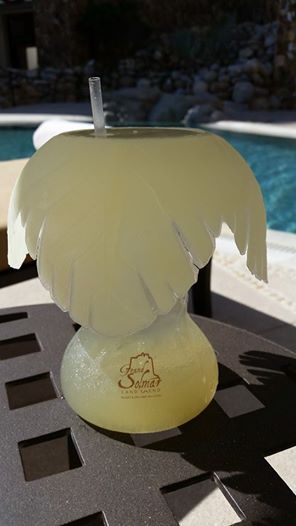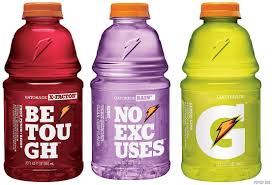Getting Sick In Mexico or Anywhere
It is called “traveler’s diarrhea” and there are a number of other names for it (tourista, Montezuma’s revenge, trots)
Defined as 2 more more lose stools in a 24 hour period (average is 5), often accompanied by stomach cramps, nausea, and vomiting.
Typically develops on 3rd or 4th day of a trip. Lasts an average of 3-4 days if untreated, but with treatment resolves in 1-3 days. However, it can last much longer.
Most likely from contaminated food. Usually bacterial in origin, but could be a virus or a parasite. Occasionally water- but usually food.
Stomach acid kills most bacteria and viruses – so if you are taking a pill to reduce or eliminate stomach acid (omprazole, protonix, prevacid, etc) you are at a higher risk of getting sick.
How it Starts – and What To Do:
It starts with the stomach rumbling a bit. You might notice a bit of acid reflux, queasy, and some nausea. You know something bad is coming. But you are on vacation, you want to deny it. You think you can hold those cheeks together and swallow hard and not vomit. When you feel this – it is time to move back to your hotel room. Before you go here are some supplies you might want some people to get for you:

It starts with some rumbling, then queasy feeling in the stomach – it is time to get back to your hotel room – and let it go.
Pepto-bismol if you can take it.
Some wipes for your behind.
Gatorade or Pedialyte
Do not fight the nausea. You will not win. Let it go – if your body wants to get rid of the toxins in your stomach, the faster you get rid of them the faster you will recover. The body stops the stomach from emptying when it detects an infection in the stomach. The longer you avoid vomiting the longer it takes for your body to recover – and as you wait your stomach will accumulate more acid, more gas, become more bloated, and you will feel worse. Let it go.
Your body will fight this – you will have muscle aches, get hot, get cold- might have a mild fever. Pepto-bismol will help this also – so after you have vomited and are feeling mildly better, this is the time to start to take the medication.
Plan on spending the time indoors – and have plenty of things to keep you occupied. Share misery on Facebook or Twitter, avoid going out. Keep drinking water and remaining hydrated.
Smoking increases the nicotine receptors of the stomach – and makes most people feel worse – with some limited exceptions. For some, a cigar will calm things down a bit. So be selective.
Your stools may be soft for a couple of days, but after the first 24 hours you will feel better and can resume most activities.
Prevention
Frequent hand washing, or bring some alcohol based disinfectants like Purell. There are a number of handy wipes you can take with you when you are out and about. Use them before you put anything into your mouth.
The vast majority is caused from food. Raw vegetables, uncooked meat, and seafood (even sushi). Avoid fruit and vegetables that cannot be peeled. The risk is higher with restaurants, so go to trusted restaurants and avoid street food.
Avoid Buffets. There are a lot of these around – you want made-to-order foods.
Water should be boiled, or treated. Carbonated water is often safe – as is beer and wine. There are a number of resorts that filter their water, or treat it, or both. So your resort may be just fine to drink water, but the restaurant down the street may not use that water source.
Ice Cubes can contain bacteria. Bad water equals bad ice. Alcohol does not kill bacteria in ice cubes (an old myth) – so be careful that if you won’t drink the water, don’t use the ice.

If the water in the resort is good, so will the ice. But if the water is good- the alcohol in the drink will not “sanitize” the ice.
Treatment
Rehydration is important. Good drinks for rehydration include Gatorade or Pedialyte. Children get dehydrated faster than adults so it is important to keep them drinking liquids.
Because of the early nausea and vomiting it is important to not chug fluids down. Instead small sips that don’t upset the stomach. Some of the drinks with extra glucose have been implicated in more diarrhea- so you might wish to dilute them, especially for children. The extra sugar is important to keep the glycogen stores up in a person. If a person is not keeping up with fluids it is important to get them to medical care for intravenous therapy.
Pepto-Bismol is standard therapy. Two tablets or two ounces four times a day. NOTE: this contains silicate and should not be combined with aspirin products or used by people who have aspirin sensitivity. Side effects: ringing in the ears (you had too much), black stools, tongue can get black. It can interfere with some antibiotics like doxycycline and malaria drugs.
Kaopectate solidifies the stools but does not decrease numbers of them. Think of it like adding a bit of concrete to the colonic water.
Lomotil and Imodium slow bowel function and reduce cramps and nausea. But they can also keep the bad stuff in – so may prolong illness. DO NOT USE if you have blood or mucous in the stools. Think of some of the diarrhea this way – your body is trying to get rid of the toxins- and this may not be desired. If you have symptoms for more than a week please see your doctor.
Antibiotics: many bugs are resistant because so many people over-treated with antibiotics. They can also cause superinfection with yeast. Taking antibiotics to prevent the problem is no longer recommended. In third world countries it is easy to obtain antibiotics without a physician – but it is unwise to do this.






No Responses to “PACK: Traveler’s diarrhea/tummy: Preventing and Treating”